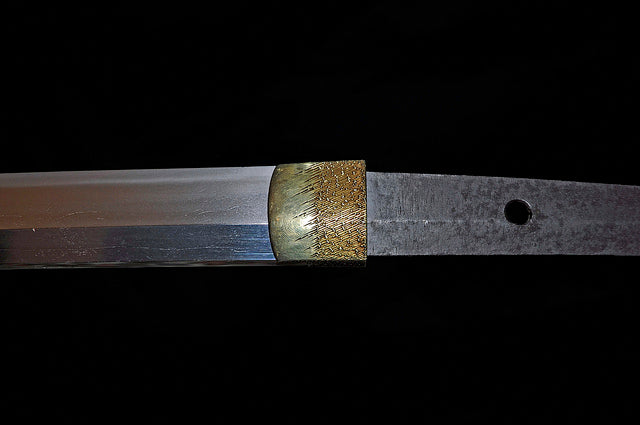Votre panier est vide

 Japan was responsible for pioneering many metalworking processes that were ultimately used to create superior quality swords, knives and other bladed weapons. One of these processes is mokume-gane, which was used to create decorative, artistic swords. Meaning "wood grain metal" or "wood eye metal," it lives up to its namesake by creating a distinct pattern similar to that of wood grain.
Japan was responsible for pioneering many metalworking processes that were ultimately used to create superior quality swords, knives and other bladed weapons. One of these processes is mokume-gane, which was used to create decorative, artistic swords. Meaning "wood grain metal" or "wood eye metal," it lives up to its namesake by creating a distinct pattern similar to that of wood grain.
How Mokume-Gane Is Done
To create the appearance of wood grain, a metalworker or bladesmith would fuse multiple layers of precious metals together. This creates a sandwich-like design featuring many independent layers, known as a billet. Next, the metalworker or bladesmith would alter the billet to create a specific design. This can be done in many different ways, though one of the most common methods involves rolling alternating layers of heated metal into the billet.
History of Mokume-Gane
While its exact origins remain unknown, historians believe that Japanese bladesmiths pioneered mokume-gane in the 17th century. Prior to this period, traditional Japanese swords like the katana, wakizashi and tachi were used primarily for military purposes. Around the 17th century, however, swords were used less for fighting and more for decorative and status purposes. Samurai warriors who owned high-quality, artistic swords were viewed as having a higher status symbol than their counterparts who did not own such swords.
Some reports suggest that Denbei Shoami invented the mokume-gane process to create artistic swords. Being a master metalworker, Shoami knew the intricacies of creating highly detailed blades. Using carved lacquerwork consisting of multiple layers of red and black, he created a stylish blade featuring the wood grain characteristics of mokume-gane.
Mokume-Gane Today
Unfortunately, mokume-gane faded in the years to follow. In the late 19th century, Japan's case system dissolved. And with this dissolution came a government-enforced ban on public weapons. As a result, the few metalworkers and bladesmiths would practiced mokume-gane shifted their work elsewhere.
With that said, some jewelry companies carry on the practice of mokume-gane, using this process to create brilliant pieces of colorful jewelry. By incorporating metals such as titanium, platinum, brass, nickel, silver, gold and bronze, these companies can create colorful jewelry with a wood grain appearance.
Modern-day mokume-gane is typically performed using a furnace. This allows for greater control over the temperature, thus allowing companies to create precise decisions with their jewelry and other products. Some companies may also use modern equipment like hydraulic presses and torque plates.